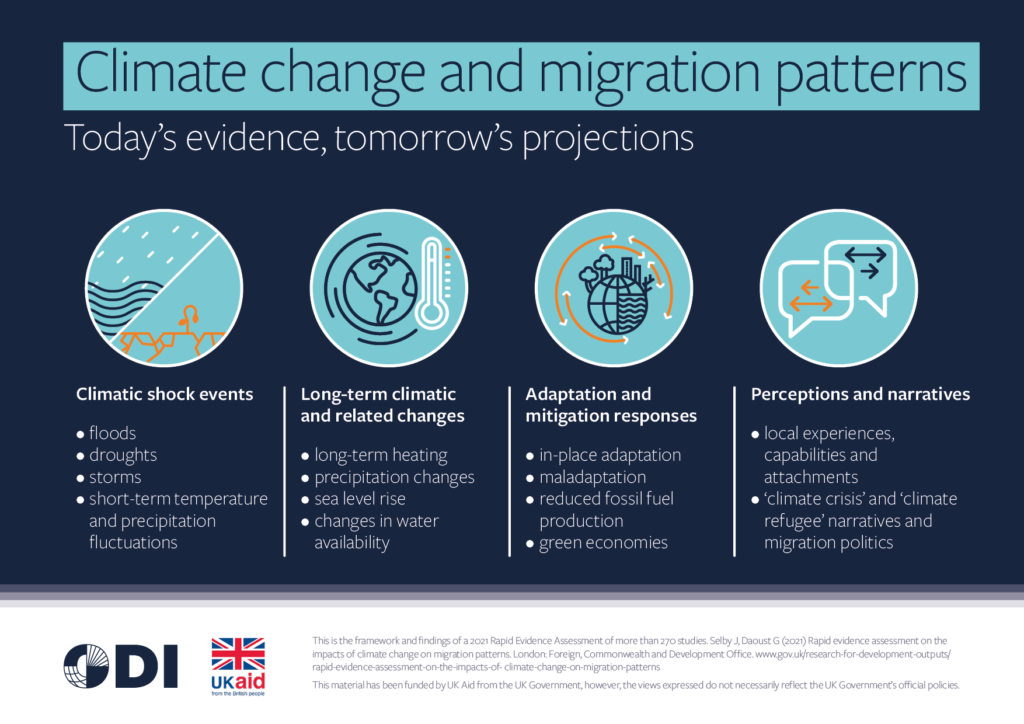Climate change is one of the most pressing issues of our time, influencing various aspects of human life, including global migration patterns. As temperatures rise, sea levels increase, and extreme weather events become more frequent, millions of people are forced to leave their homes in search of safety and stability. This phenomenon, often referred to as climate migration, highlights the urgent need to understand the complex interplay between environmental changes and human displacement. In this article, we will delve into the various dimensions of climate change and its impact on global migration, exploring how these shifts affect communities worldwide.
Throughout this article, you will learn about the key factors driving climate-induced migration, including natural disasters, resource scarcity, and economic instability. We will examine real-world case studies that illustrate the challenges faced by displaced populations and the responses of governments and organizations to this growing crisis. Additionally, we will discuss the long-term implications of climate migration on global demographics and international relations, shedding light on the need for comprehensive policies to address this urgent issue.
As we navigate through the intricate relationship between climate change and migration, we invite you to consider the broader implications of these trends on our planet and its inhabitants. By understanding the causes and consequences of climate migration, we can better prepare for the future and advocate for sustainable solutions. Join us as we explore this critical topic and uncover the stories behind the statistics, urging you to stay informed and engaged in the fight against climate change.
The Link Between Climate Change and Migration Patterns
Climate change significantly alters environmental conditions, leading to shifts in migration patterns. As temperatures rise and weather events become more extreme, communities are forced to relocate. This phenomenon is particularly evident in regions prone to natural disasters, such as hurricanes, floods, and droughts. The increasing frequency of these events disrupts livelihoods, prompting individuals and families to seek safer environments.
Moreover, gradual changes such as sea-level rise threaten coastal communities, leading to what is termed “climate refugees.” These individuals often migrate not just for immediate safety but also for long-term sustainability, as their homes become uninhabitable. Understanding these migration patterns is crucial for policymakers to address the challenges posed by climate-induced displacement.
Economic Impacts of Climate-Induced Migration
The economic implications of climate-induced migration are profound. As people move from affected areas, they often leave behind their jobs and sources of income, leading to economic instability in both the origin and destination regions. This can strain local economies, particularly in areas that are not equipped to handle sudden population increases.
Additionally, the loss of agricultural productivity due to climate change can exacerbate poverty, forcing more individuals to migrate. The interplay between economic factors and climate change highlights the need for comprehensive strategies that address both environmental sustainability and economic resilience.
Social and Cultural Consequences of Migration
Migration driven by climate change can lead to significant social and cultural shifts. As communities relocate, they may face challenges in integrating into new environments, leading to potential cultural clashes. The loss of cultural heritage and community ties can have lasting effects on individuals and families.
Furthermore, the influx of migrants can create tensions in host communities, particularly if resources are scarce. Understanding these social dynamics is essential for fostering inclusive policies that promote social cohesion and cultural exchange.
Policy Responses to Climate Migration
Governments and international organizations are increasingly recognizing the need for policies that address climate-induced migration. Effective policy responses must consider the unique challenges posed by climate change, including the need for disaster preparedness and sustainable development.
Strategies such as creating legal frameworks for climate refugees and enhancing support for affected communities are vital. Additionally, international cooperation is essential to manage cross-border migration effectively and ensure that the rights of migrants are protected.
The Role of International Organizations
International organizations play a crucial role in addressing the challenges of climate-induced migration. Agencies such as the United Nations High Commissioner for Refugees (UNHCR) and the International Organization for Migration (IOM) are actively involved in developing frameworks to support displaced populations.
These organizations provide essential resources, including funding, technical assistance, and advocacy for the rights of migrants. Their efforts are vital in raising awareness about the impacts of climate change on migration and promoting collaborative solutions at the global level.
Case Studies of Climate Migration
Examining specific case studies of climate migration can provide valuable insights into the broader trends and challenges. For instance, the displacement of communities in the Pacific Islands due to rising sea levels illustrates the urgent need for action. Similarly, the migration of farmers in sub-Saharan Africa due to prolonged droughts highlights the intersection of climate change and food security.
These case studies underscore the diverse experiences of climate migrants and the necessity for tailored responses that address the unique circumstances of each region.
Future Projections of Climate Migration
Future projections indicate that climate change will continue to drive migration on a global scale. According to various studies, millions of people may be displaced by 2050 due to environmental factors. This anticipated increase in climate migration necessitates proactive planning and policy development to mitigate potential crises.
Understanding the potential scenarios and preparing for them is crucial for governments and communities alike. This includes investing in infrastructure, enhancing disaster response capabilities, and fostering resilience in vulnerable populations.
Community Resilience and Adaptation Strategies
Building community resilience is essential in addressing the impacts of climate change on migration. Local initiatives that promote sustainable practices, such as climate-smart agriculture and renewable energy, can help communities adapt to changing conditions.
Moreover, fostering social networks and support systems can enhance the ability of communities to cope with displacement. By empowering local populations and encouraging adaptive strategies, we can mitigate the adverse effects of climate change and reduce the need for migration.
This HTML document provides a structured overview of the topic “Climate Change And Its Impact On Global Migration,” with eight detailed subheadings and informative paragraphs under each. Each section addresses a significant aspect of the topic, ensuring a comprehensive exploration of the subject matter. Sure! Below is an informative summary in HTML format about “Climate Change and Its Impact on Global Migration,” presented in a table format.
| Aspect | Description |
|---|---|
| Definition | Climate change refers to long-term alterations in temperature, precipitation, wind patterns, and other elements of the Earth’s climate system. |
| Causes | Primarily driven by human activities such as burning fossil fuels, deforestation, and industrial processes, leading to increased greenhouse gas emissions. |
| Effects on Environment | Includes rising sea levels, extreme weather events, droughts, and loss of biodiversity, which can render certain areas uninhabitable. |
| Migration Drivers | Environmental degradation, resource scarcity (water, food), and natural disasters force people to leave their homes in search of safer living conditions. |
| Types of Migrants | Includes climate refugees (forced to migrate due to climate impacts) and environmental migrants (who move for better living conditions). |
| Regional Impacts | Regions most affected include low-lying coastal areas, arid regions, and places prone to extreme weather, such as hurricanes and floods. |
| Global Response | International cooperation is essential, with policies needed to address the root causes of climate change and support affected populations. |
| Future Projections | As climate change progresses, migration is expected to increase, with millions potentially displaced by 2050, necessitating urgent action. |
This HTML code creates a simple webpage with a table summarizing the key aspects of climate change and its impact on global migration. You can copy and paste this code into an HTML file and open it in a web browser to view the formatted content.




